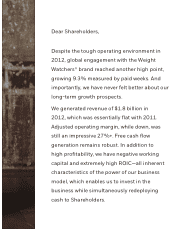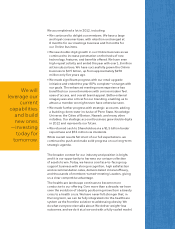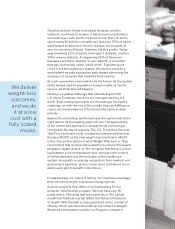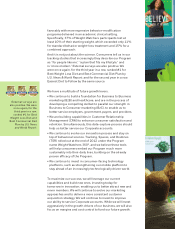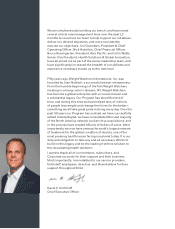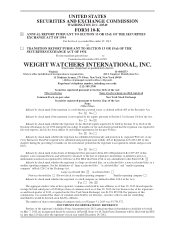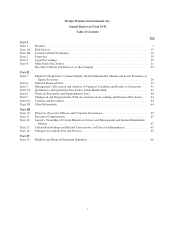WeightWatchers 2012 Annual Report Download - page 6
Download and view the complete annual report
Please find page 6 of the 2012 WeightWatchers annual report below. You can navigate through the pages in the report by either clicking on the pages listed below, or by using the keyword search tool below to find specific information within the annual report.
Obesity has been linked to multiple diseases, and the
epidemic continues to worsen. It has massive implications
on healthcare costs, which continue to rise. The U.S. alone
spent nearly $ trillion on healthcare last year, % of which
went toward treatment of chronic disease, the majority of
which is driven by lifestyle. Diabetes fits this profile. Today,
approximately % of adults have type diabetes; another
%+ are pre-diabetic. A staggering % of American
teenagers are either diabetic or pre-diabetic, a condition
that was historically called ”adult onset.” Diabetes alone
could crack the healthcare system. We need to move to a
world where we take a proactive path toward stemming the
incidence of diseases that emanate from obesity.
As such, preventive care needs to be the future. As the system
shifts toward captive population-based models vs. fee for
service, we think this will happen.
Obesity is a global challenge that extends beyond the
U.S. Many European countries are now approaching U.S.
levels. Even emerging markets are increasingly facing this
challenge, as with the rise of the middle class and affluence
comes an overabundance of food and a decrease in daily
activity.
Against this backdrop, we feel we have the right model at the
right time to be the leading agent of care. The applicability
of our model and approach is already being increasingly
recognized. By way of example, The U.S. Preventive Services
Task Force endorses multi-component intensive behavioral
therapy (MCBT) as the only weight-loss treatment—MCBT
is the clinical description of what Weight Watchers is. They
recommend that doctors refer patients to community-based
programs. Again, that is us. We recognize that there is a time
lag between a recommendation and ultimate enforcement
of reimbursement, but the evolution of the healthcare
system, along with increasing recognition from medical and
government agencies, gives us even more confidence in our
ability and right to benefit in the future.
Fundamentally, our brand is strong: Our members are happy,
they are losing weight, and we are changing lives.
Science supports this; there is clinical backing for our
behavior-modification program. We now have over
publications. Following last year’s articles in The Lancet
and British Medical Journal (BMJ), the National Institutes
of Health (NIH) funded a study published in the Journal of
Obesity, which also found beneficial outcomes for Weight
Watchers participants; namely our Program compared
We deliver
weight-loss
outcomes,
and we do
it at a low
cost with a
fully scaled
model.



